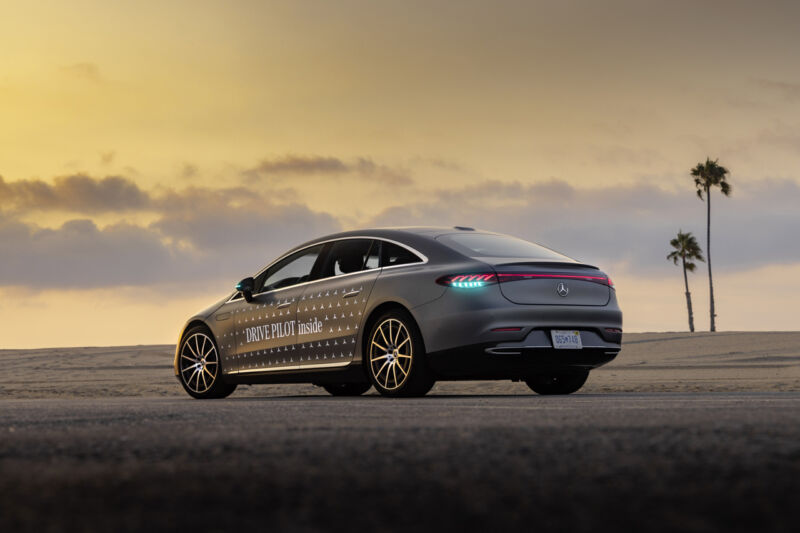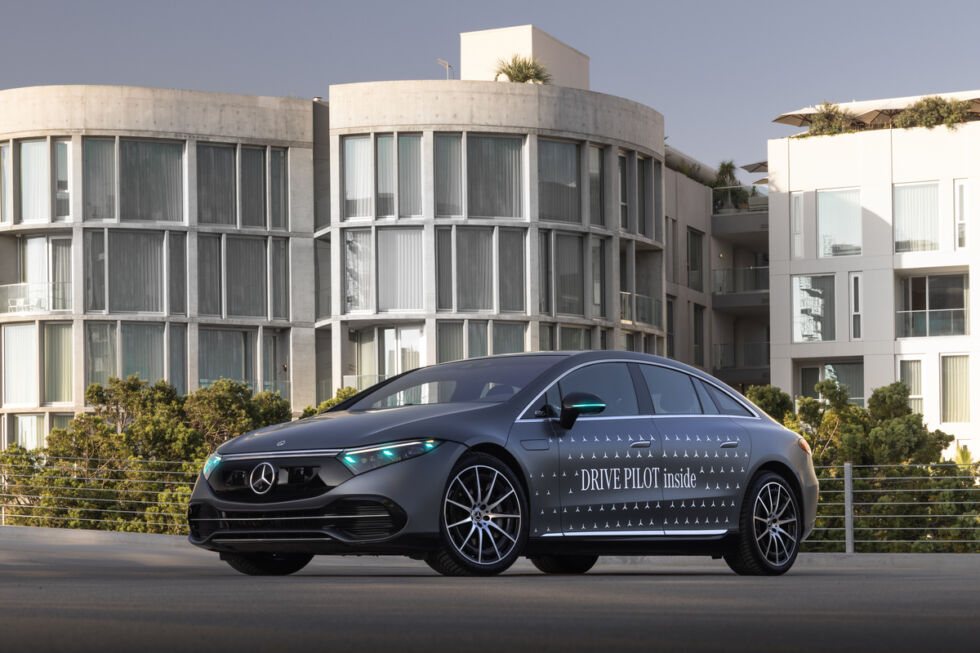
Mercedes-Benz
Authorities in California and Nevada have both granted Mercedes-Benz permission to test out a new car-to-human communication idea. While we’re still some way away from road cars emoting like some of the concepts we’ve seen in the past few years, the automaker will use turquoise-colored marker lights to indicate when its advanced partially automated driver assistance feature is operating so other road users are aware.
Mercedes’ Drive Pilot system is what’s known as Level 3, or conditionally automated driver assist, according to the SAE International’s classification system. In some ways, it’s similar to so-called Level 2+ systems like General Motors’ Super Cruise or Ford’s BlueCruise in that it has a tightly controlled operational design domain that only allows it to operate on pre-mapped restricted-access highways.
But unlike those systems, Drive Pilot lets you take your hands and eyes off the road. That’s because it will only work at speeds of up to 40 mph (65 km/h)—it’s not meant for cruising at speed. The lower speed envelope means there’s enough time for Drive Pilot to warn the human behind the wheel that it’s time to think about driving and take over.
The idea of a Level 3 driver assist isn’t exactly new. In 2017, we rode in Bosch’s test system at its test track in Germany, and Audi’s conditionally autonomous test car (called Jack) took us for a spin in Washington, DC.

Mercedes-Benz
But Drive Pilot is the first Level 3 system to gain regulatory approval for deployment, getting the blessing of the (notoriously safety-conscious) German authorities in 2021. This year, the states of California and Nevada have also permitted Mercedes to deploy Drive Pilot on their roads, and in September, we went for a ride in a Drive Pilot-equipped car on California’s highways.
Turquoise lights
As some cars gain more autonomy, it’s probably helpful if they have a way to signal their intentions to other road users. Concept cars have explored this idea for some time—we’ve seen demos of cars using their headlights to project crosswalks in front of pedestrians or using exterior panels to communicate to a cyclist that the car has seen them, or just emote to everyone nearby.
As is often the case when an idea goes from concept to reality, the result in practice is a little less futuristic. Mercedes says it picked turquoise for the marker lights in the headlight and taillight clusters as well as the side mirror because the color is differentiated enough from other colored lights that road users might encounter while driving; and human factor research points to turquoise as the optimal color for this application.
The automotive industry hasn’t formally adopted the color as a way to signal a car is driving autonomously, but it is described in an SAE industry-recommended practice. Mercedes says it is committed to standardizing the color to indicate a car is operating in an autonomous mode.
California granted Mercedes approval to deploy the turquoise lights in its own fleet of test cars, initially for the next two years. And Nevada has permitted the car maker to add them from model year 2026 for the EQS and S-Class sedans.


























